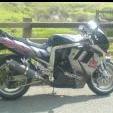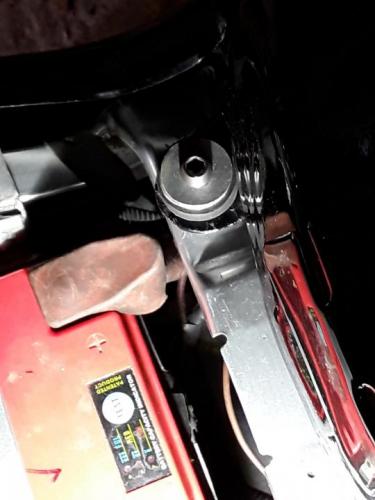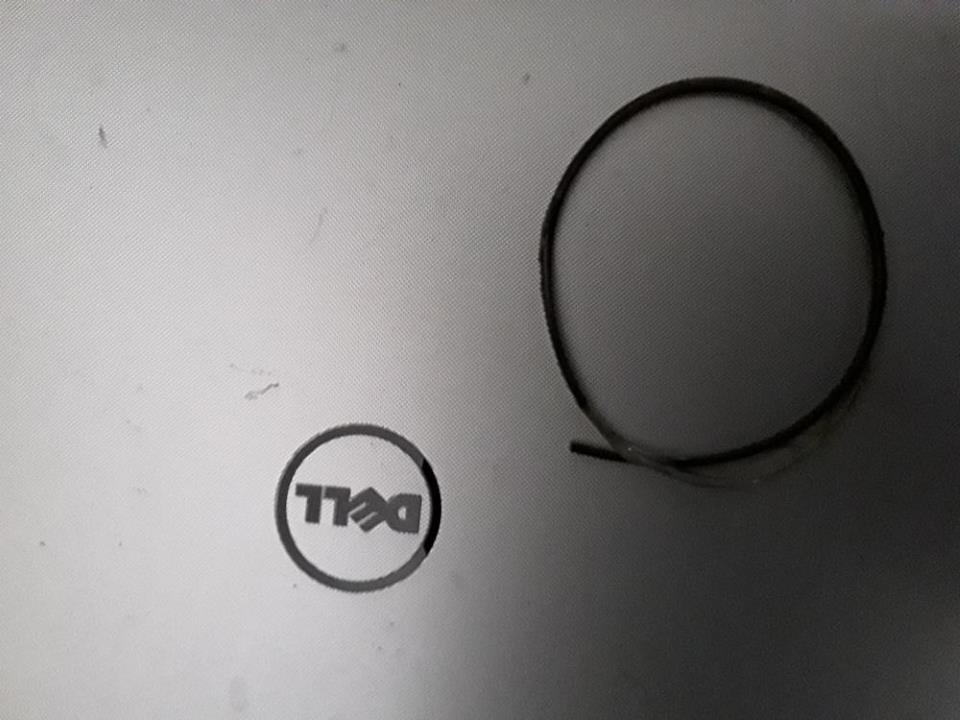-
Posts
805 -
Joined
-
Last visited
Content Type
Profiles
Forums
Events
Everything posted by Oilyspanner
-
You can Zinc plate pretty easily at home, have done a few bits recently - plenty of 'how to' videos on youtube, zinc heals chips in itself too......wish I'd been doing coatings when I had my engine apart, I rust treat my tubes, under coated and did a top coat on mine - still look good.
-
Loving the build Could you do me a big favour, I've been trying to find out the piston weight of the Wossner pistons for almost a year, but have had no success. Their pistons are a slightly different design to the American pistons which are 10 % heavier than stock. I believe they also taper bore the gudgeon pins as well, like the stock pins - the American ones aren't and are 10 % heavier !! I'm hoping the W. pistons are lighter, if so I'll use some on a future project. 80,81 and 82mm pistons normally weigh much the same. Wiseco pistons weighed 237.5g and the g.pins were 78g average. You might've buttoned it all up now of course ! Cheers
-
The last time I put the engine back in I put the engine on a wooden frame, sat that on a platform Jack and that sat on a skateboard ... it worked a treat, the skateboard allowed me to move the engine around to line up the mounts - the lower rear mount with the spacer can be a pig.
-
https://sites.google.com/site/suzukitechnical/suzuki/valvesizes Further cam details below the valve sizes/ lift details on the left margin. There's a stack of good stuff in the vault section - for tuning, mods etc tap on the OldSkool Suzuki info at the top of the page , the vault section is on the lower right margin.
-
As Dezza says, that's a big m.c., standard's a 14mm I think, shouldn't make much odds though. Check the slave cylinder, could be corroded or have a leaky seal.
-
Good stuff FBOB - even the 750l/m forks are a decent saving on the 740mm (axle centre to cap top)1100 L/M/N forks, mine weighed just over 5.1 kg. The 750 K8/L0 forks I added are 734mm long and weigh 3.75 kg , the 1kilo springs were spot-on for my lightened bike and svelte 90kg self. Hope the missus has forgiven you for the oil spillages, it could be worse . . . . mine wasn't happy with the oil in the dish washer/parts washer !
-
Hello - need more details, is the bike std., what's been altered etc really hard to know if ignitor box is fine, sometimes you only know because the bike runs fine with a different unit. The photo would also help to see what might be at fault.
-
That's a lovely looking N ! - just saying …...
-
On the bolts etc - if it's highly stressed I've left them as steel, otherwise Ti, if lightly stressed - ally and even nylon on some (nylon bolts don't vibrate out either and weigh next to nothing). Ti works out expensive, but over a few years I've changed over most of my bolts outside of the engine internals with Ti, Al and nylon, but I doubt I've saved more than a kilo or so - my Lithium battery and ally holder saved slightly over 4 kg alone, for a cost of £90, you've got to make sure your charging system is in spec. with a Li battery. You can run the bike total loss on the track and refit the alternator for the road, worth a couple of hp and saves some weight.
-
The lithium battery and ally holder are very easy and not that costly (easy to make an aluminium holder using pop rivets/low temp welding rods). All the things that have been said, plus reduce all revolving mass you can, ally sprocket, smaller chain, lighter discs and make sure the inner wheel bearing spacers are aluminium to drop a bit of weight - plus use lightweight construction tyres.
-
The lack of fins/surface area will cause very hot running, the fins do a lot of the cooling - oil is reluctant to release it's heat, although the big oil cooler helps a lot, you'd need one 4 to 5 times larger than a w/c radiator to cool an engine without fins.
-

Back on the road after a 4 year lay-off...
Oilyspanner replied to GSXRLincolnSteve's topic in Oil Cooled
She's a looker, hopefully you'll use it more this coming year ? -
You can barely see it Mr B, but it's down below the positive terminal, fairly snug and secured to the plastic shroud/cover/surround.
-
I shifted mine to the inside left of the plastic outer shroud around the battery tray/box - although I made a light ally battery box for the Li battery, so don't know if there's room beside the standard box/tray/holder/thing ! I'll see if I can take a photo later.
-
Our engines are limited by the head, if you increase the capacity and not do head-work you won't gain that much power, it'll develop more torque at lower revs and have more peak torque, but power will drop sharply after peak torque. Fitting a turbo will force the air into the engine getting around head design, larger valves and careful flow work will yield far more power than stroker crank or huge bore. The old high output engines did have large capacity, but they had very special heads too - along with machining to lower pumping losses and venting etc. A 1340 engine with little or no head-work will put out in the 140s hp , it'll make a load of bottom-end and mid-range power though (they feel very grunty) - it depends what you want. Some engines have heads that can easily feed a larger engine and you get big gains with less than a 100cc extra displacement - ours don't, the heads need some work to give big gains. If you want a really grunty motor just increase the capacity, the more the better. If you want a really impressive motor spend most of your time on the head (and money !) ,plus a high comp. big bore - if you want to blow your socks off, fit a turbo …….it's a long winter, so the plenty of time to get work done.
-
Found your other post Naim - those 750 cams would work pretty well - other cams that would work well are the gsx1100f (big teapot), these give good peak and spread of torque. Those 40mm bst carbs wouldn't be ideal, without work you'll lose lower range power and gain a little at the top - you would need to blend the ports to suit the big carbs and rubber inlet manifolds, else you'll lose more power - 36mm carbs would be more suitable unless you tune the engine - raised compression, flowed head, big bore etc even then the 36mm carbs are good for a road engine.
-
The Americans didn't get the 40mm BST carbs on their GSXR1100s like the rest of the world in 1991/92, so all their 1100s had 36mm carbs - the ad. being from the U.S. will mean the rubber inlets will be too small. I bought a new old stock 41c00 inlet rubber a few years ago on #bay, they rarely come up for sale at a reduced price - each of the four are numbered and are all differently angled - so you would need a set. 36mm bst carbs are much easier to tune and parts are easier to find as many of our engines used them. I like my 40mm bst carbs, but they are sods to tune if you move away from the standard set-up. I tried to use after market filters (not the airbox) and despite liking a challenge I couldn't get the power delivery anywhere close to being decent - I refitted the airbox, fitted smaller jets and I had loads of torque, with a power curve with no drops - it felt twice as powerful in the mid-range and had more top-end ! I don't know if you'll be able to use the Inazuma's airbox with the big carbs - but as the saying goes - nothing ventured nothing gained....
-
Fuel pumps for carbed bikes only operate at very low pressure, not like injected bikes - healthy float valves /seats should stop the fuel flow easily enough - do you actually need a pump on the In. 1200 ?.....maybe there's very little distance between the fuel tank and carb fuel inlets ? Are you tuning the motor ? 40mm carbs are good for mid-range up power. but you will lose some power lower down, if you big bore and flow the engine they're good - sorry if you've posted engine work being carried out in another post listing what you're doing. You'll need 41c00 inlet rubbers for the carbs and you'll need to match the inlet port entry to the diameter of the inlet rubbers ……. you probably know this and it's listed in your post somewhere !
-
Any of the bikes that raced in the last few years have far lighter wheels - supersport class have to use std wheels, as has been said twisted spoke Slingy wheels are very heavy - front : 11lb10oz with spacer and bearings, rear 16lb 14oz likewise (you youngsters can convert to kg !) to give an idea I have a 600/750/1000 k8/9Lo front it's 9lb 2oz, the rear is a later (L3) 750 wheel and weighs just 11lb 4oz , the L1 onwards 600/750 front wheels are under 9lb. There's less mass in the rim on modern wheels too. this makes a difference too.
-
Pretty sure the L is the same as the M and N - I've got the centre to centre measurement written down as 188mm - from when I made some linkage rods from ally .
-
Aye, easy to make things fit, but harder to do the job properly ! - Can't you get a 300 motorcycle tyre now, just saying......
-
Likely the clutch and or the slave cylinder seals aren't doing their job - mine started to do this last year, fitted new seals in both and all was good again. Fresh fluid and a good bled are a must too, any air will make the clutch drag.
-
It must be raining where you are r1guy ! G1460 has it right, for mega cc motors the air cooled, vey over engineered gsx is the one to go for. The lighter oil cooled motors have a link between the 750 and 1100 engines, so ultimate size will be limited as the 1100 is a stretched 750 to start off with. I missed the oc engines when I was spending money in the 90s, but like many knew others who worked with the motors - the big liners in a stock block weren't as reliable as big pistons in a big block. The head has more effect to power than capacity. A big engine making big power was hard to keep cool, oil cooling is 5 times less effective than water at cooling - it was this that prevented the oc engines remaing in the gsxr range for longer. The Hayabusa engine has become the modern 1100 engine, only not so easy /fun to work on. That's my take .. you can spend a lot of money on an 1186/1216/1246 engine, but done right it's a pokey, reliable, sweet engine, but still might need an extra cooler if you have a full fairing.
-
Had some oil ooze it's way onto the upper case by the alternator. I've removed the alt. before and noticed a smear of sealant around the sealing gasket area, but a closer look showed a top bodge... The O ring seal had had snapped and rather than buy a suitable seal had smeared a goodly amount of sealant around it. I measured the old o ring and then looked online for confirmation of size and found a post from the helpful man fbob, not only the size , but with a link to a supplier .... job done, well 2 days later anyway ! Size is 87mm od and 2.5 cross section, actually the Suzuki size is fraction smaller on c.section, but 2.5 works fine and is more readily available. I think it's the same for just about all our engines.
- 1 reply
-
- 1
-

-
The Slab forks aren't cartridge forks (old damper rod forks), the rwu 750j/k forks were the first to have properly adjustable cartridge forks. The 750l/m have fully adjustable cartridge forks, with rebound and compression damping adjustment in the fashionable usd design. I seem to remember that the Slabby forks are longer than most ? someone ?



